Last Updated on April 7, 2024 by Marian Jones
We visit the Piazza della Signoria, the square from which Florence has been ruled from about 1300, which has been the site of major dramatic incidents from history such as the burning to death of the ‘mad monk’, Girolamo Savonarola. First, we run through what there is to see in the square, which includes some of Florence’s best-known artworks. Then we take a little time to tell Savonarola’s story; his firebrand preaching, the Bonfire of the Vanities he organised and his falling out of favour and execution, all of which happened in and around the Piazza della Signoria.
a little history
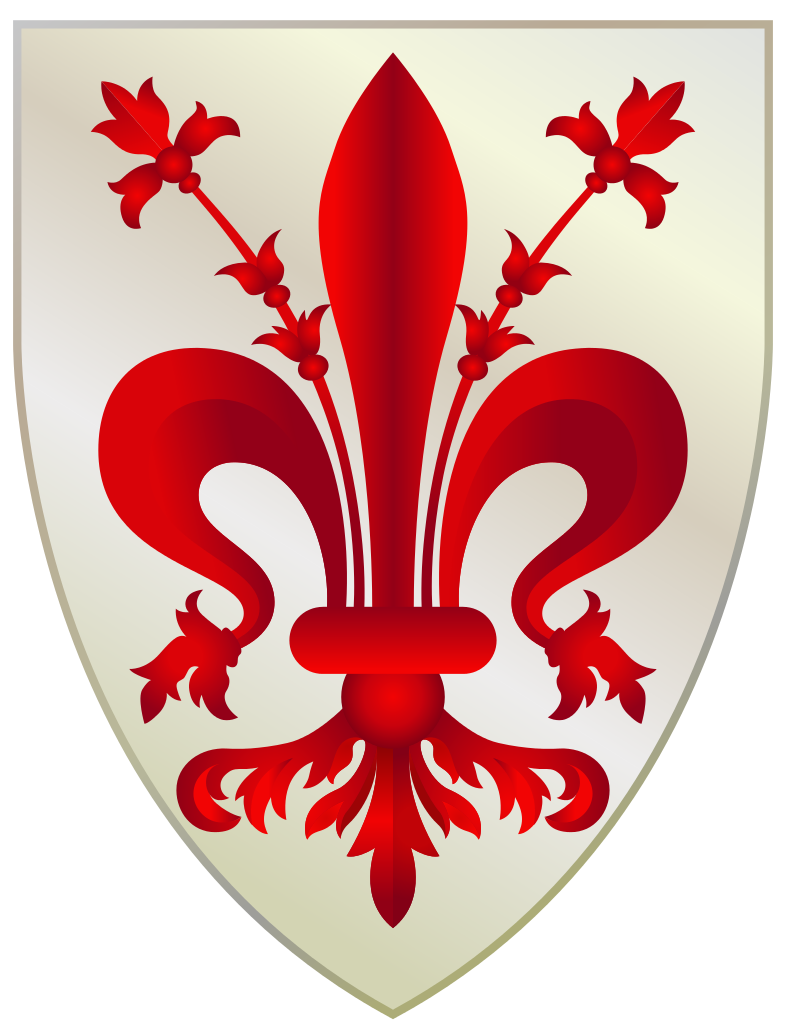
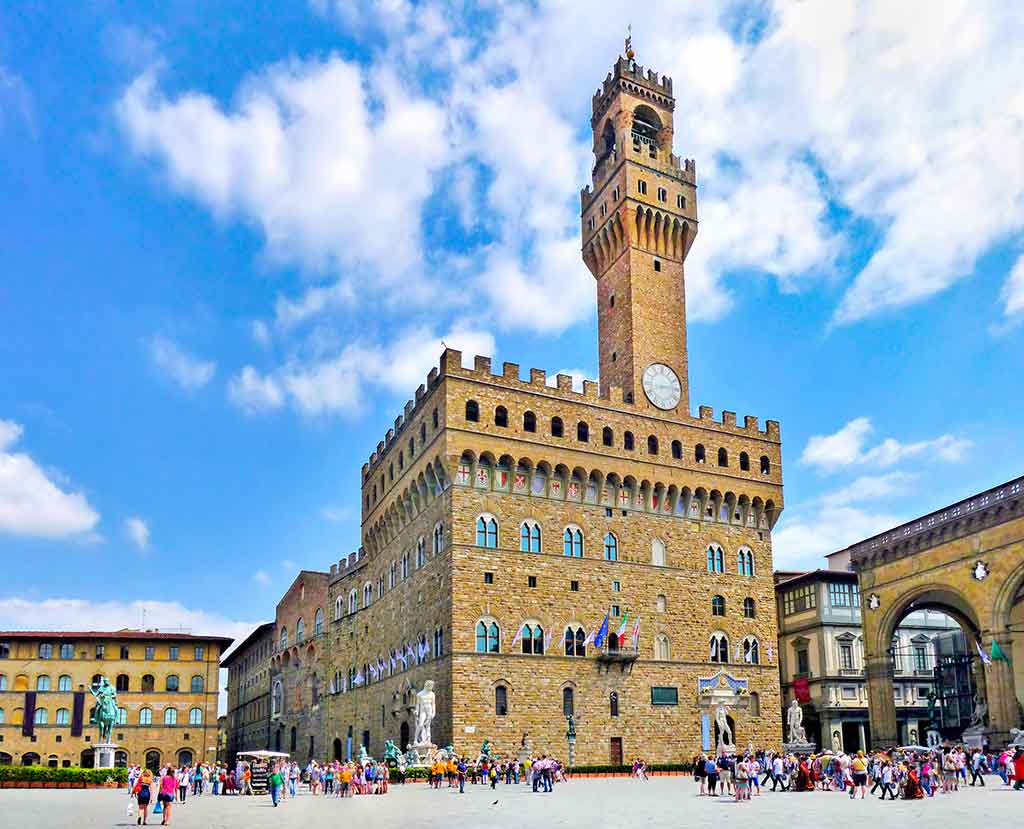
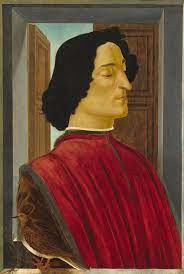
The Piazza della Signoria was created in 1307, intended to be the square from which the city would be governed, centred around the new government building, the Signoria, also known today as the Palazzo Vecchio, or ‘Old Palace’. The square has seen some of Florence’s key historical moments, including the arrest, in 1433 of Cosimo di Medici. He was summoned by the ruling council to discuss ‘some important decisions’, only to be arrested and flung into a prison cell at the top of the 300-foot high Signoria tower. If you visit it today and climb the tower you will still pass the little cell where he was held before being sentenced to 5 years in exile.
There was another Medici drama here in 1472, when members of the rival Pazzi family murdered Giuliano di Medici in Florence Cathedral. The bells of the Signoria were rung out to call citizens to come and hear the news. When the perpetrators were caught, they were hanged from the top of the tower, as described in an earlier episode. It was here too, in 1528, that the citizens of Florence were summoned to hear the news of the French invasion of the city, and of the exiled Piero di Medici who fled the city with a price of 2000 florins on his head. This grand square is the political heart of Florence and the City Council is still based here.
what to see in the piazza della signoria
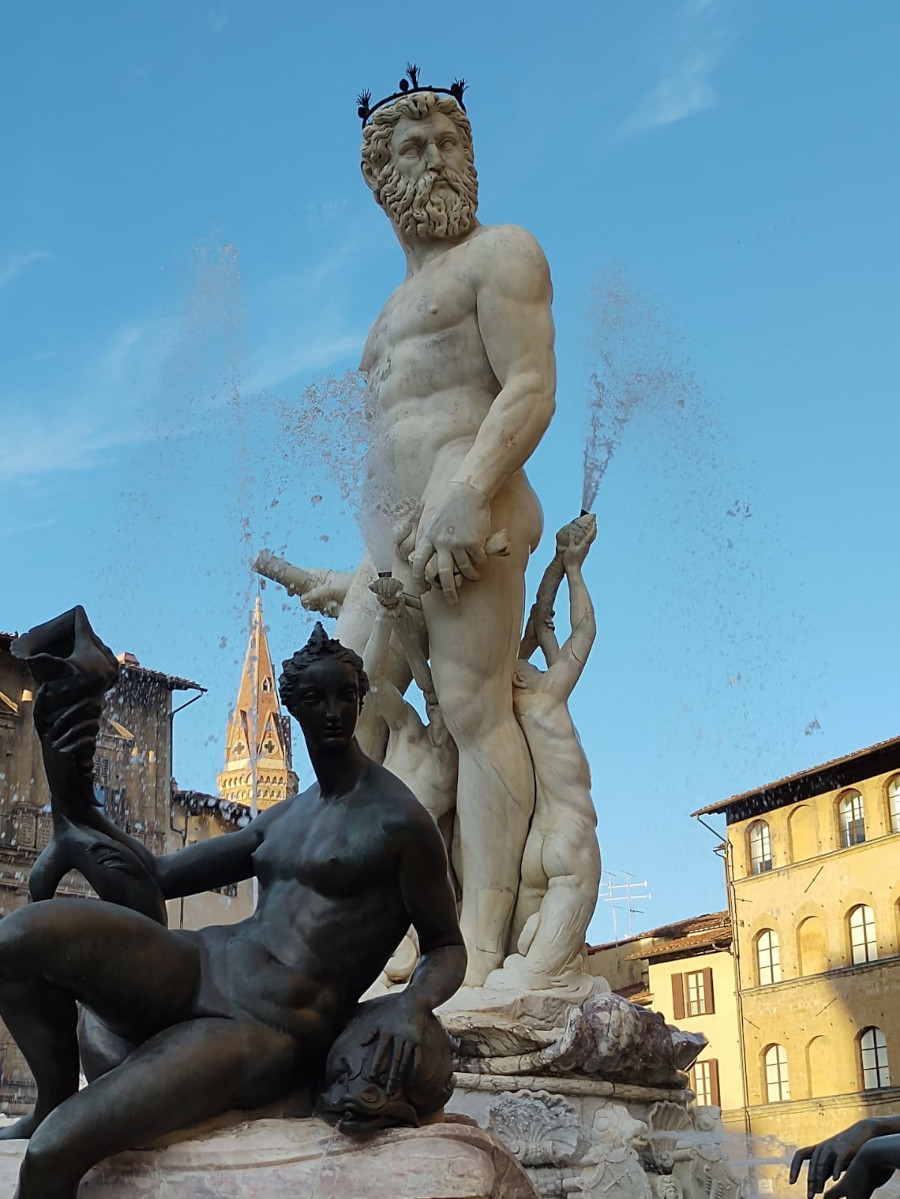

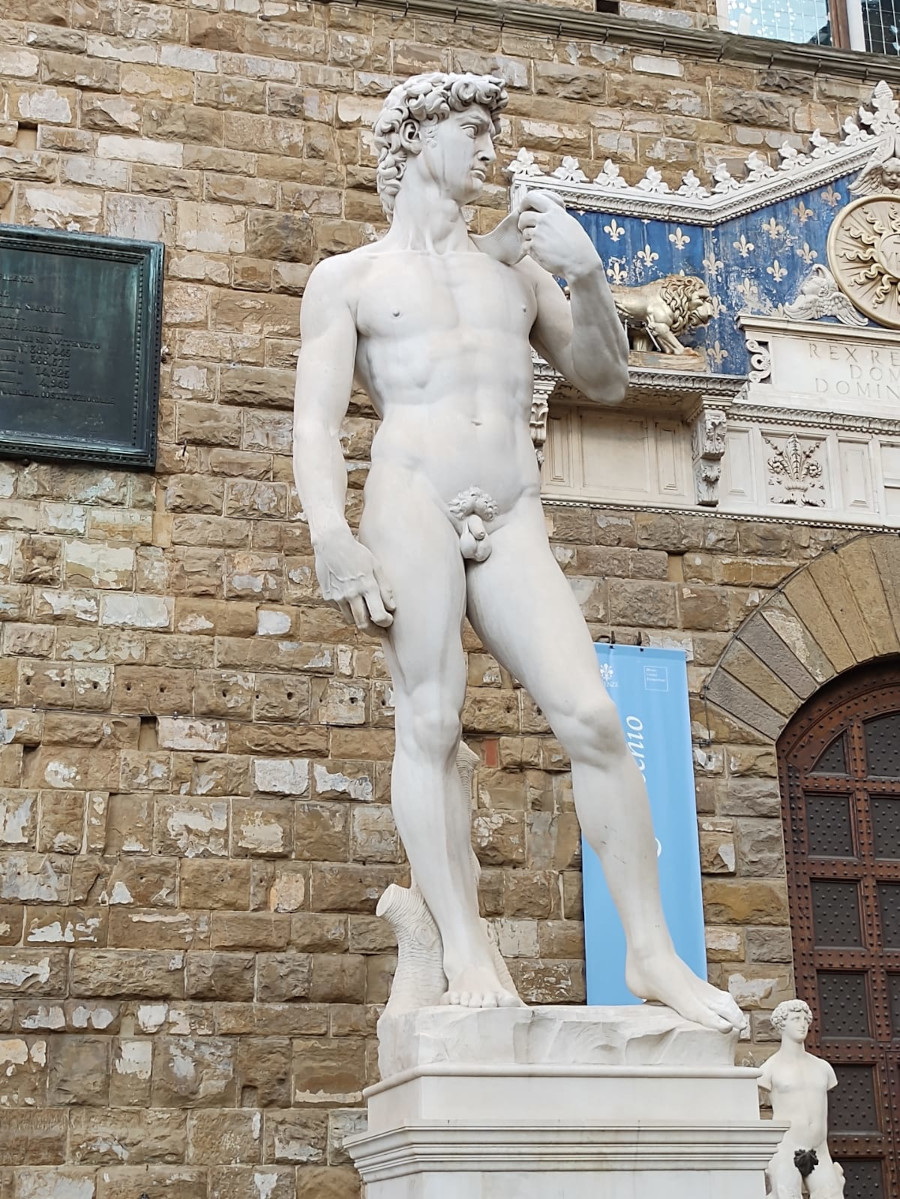
The grand statue of Duke Cosimo I on horseback was commissioned by his son, and as it’s based on the statue of the Emperor Marcus Aurelius in Rome it sends a strong message about power and influence. The nearby Neptune Fountain, designed in 1565 by Bartolomeo Ammannati, was supposed to pay tribute to Duke Cosimo’s strength as a naval commander, but Michelangelo thought so little of it that he commented – altering the sculptor’s name name slightly to fit the rhyme! – ‘Ammanato, Ammanato, che bel marmo hai rovinato’, meaning ‘Oh, Ammanati, what a beautiful piece of stone you have ruined.’ A ‘Rough Guide’ author described it as ‘a lumpen lout of a figure’. Ouch.
Also in the square are replicas of two of Florence’s most famous statues, Michelangelo’s David and Donatello’s dramatic murder scene, Judith and Holofernes. The originals have been moved inside, to preserve them from the elements, and are now to be found at the Accademia and inside the Palazzo Vecchio respectively. Look out too, just near the Neptune Fountain, for a round marble plaque, set into the paving, which marks the spot where the monk, Savonarola, was hanged and burned on May 23rd 1428. It was here in the square too that the culmination of his impassioned campaign of firebrand preaching took place, namely the Bonfire of the Vanities.
savonarola, the mad monk
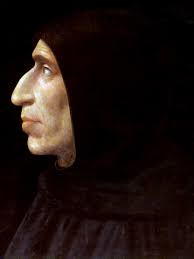

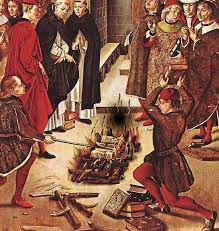
Girolamo Savonarola was a 15th century monk who captivated Florence with his denunciations of evil and his calls for everyone to follow him. Many did so, and soon his ‘blessed bands’ (as he called them) of young followers, their hair cut short like Savanarola’s, were marching through the streets and, as described by Christopher Hibbert, ‘bearing crosses and olive branches, singing hymns, collecting alms and …… urging their parents to abandon their evil ways and follow the paths of virtue.’ They were even encouraged to report family members or neighbours whom they deemed to be falling short in any way. For a time, Savonarola’s influence seemed all-pervasive. Then came the Bonfire of the Vanities.
Savonarola arranged the public burning, here in the square, of huge piles of confiscated objects which he deemed irreligious. They included clothing, books, jewellery, indeed anything he regarded as frivolous, even paintings by some of the city’s best-known artists. But, just a year later, Savonarola himself was accused of heresy, tried by two papal commissioners brought up to Florence from Rome and sentenced to death. He was first hanged, here in the Piazza della Signoria and then his body was burned. As an eyewitness known as Landucci reported, the ashes of his bones were thrown into the River Arno, such was the fear of ‘people getting hold of them.’ The authorities wanted rid of every last piece of him.
There is much more on this story on the podcast. For a detailed re-telling, plus a lot more about the history of the Piazza della Signoria – and indeed the whole of Florence! – we recommend Christopher Hibbert’s excellent book, listed below.
Listen to the POdcast
Reading suggestion
Florence, the Biography of a City by Christopher Hibbert
links for this post
Links for this post
The Piazza della Signoria
Previous episode The San Lorenzo area and Lorenzo il Magnifico
Next episode The Palazzo Vecchio






